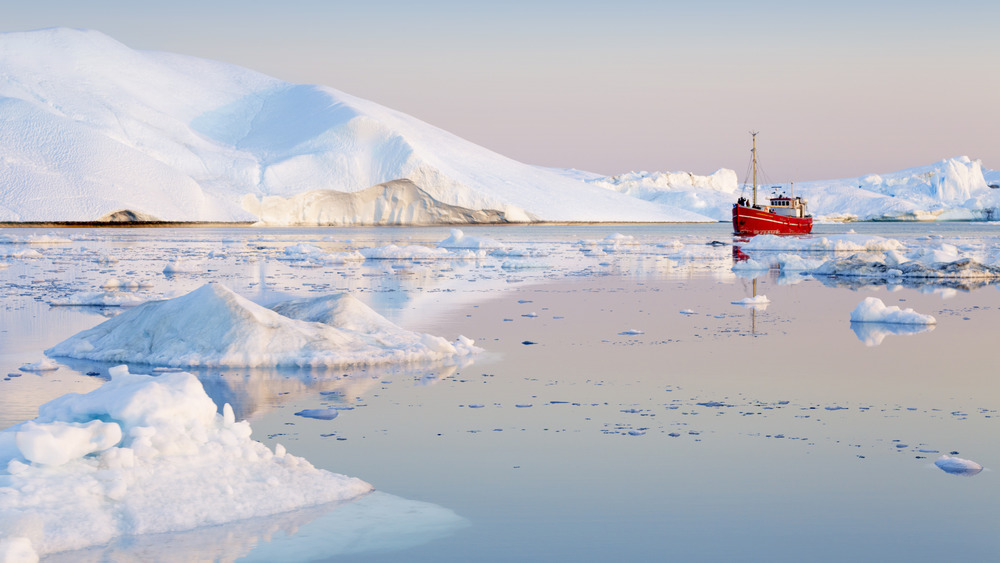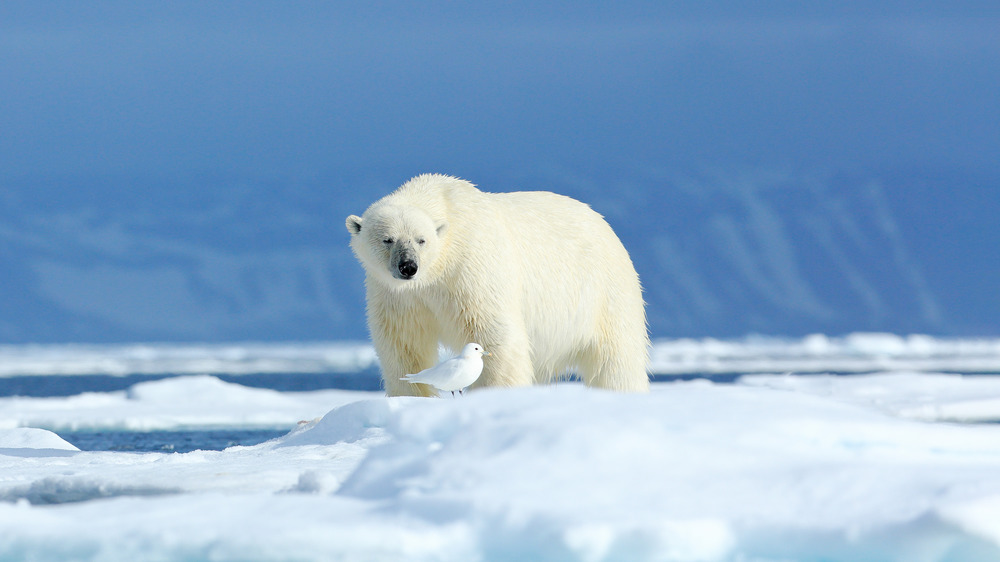How Cold Does It Really Get At The North Pole?
If you know one thing about the North Pole, it's that Santa lives there. But if you know two things about the North Pole, then you know that it's extremely cold. The North Pole is the northernmost point on the Earth, lying in the middle of the frozen Arctic Ocean. Yet, surprisingly, the North Pole might not be as cold as you imagine it.
Per the Woods Hole Oceanic Institution, the average yearly temperature at the North Pole is 0°F (-18°C). Sure, that's pretty cold. But if you live in a city in the far north (or far south) of the world, there's a good chance that you've experienced a temperature lower than that. For example, the United Kingdom's Met Office reports that temperatures have dropped below 0°F many times in the UK over the past 50 years.
The North Pole doesn't even hold the title of the coldest place in the Northern Hemisphere. Per Arizona State University, that chilly honor belongs to Oymyakon, Russia, where temperatures have reportedly dropped below -89°F (-67°C), and average below -40°F (-40°C) in the winter months. Oymyakon is colder than the North Pole due to Oymyakon's rapid winds and high elevation; it sits in a freezing valley among the Siberian mountains.
Remember that 0°F is just the North Pole's average temperature. It can get higher in the summer and drop lower in the winter.
The North Pole is pretty cold, but not as cold as the South Pole
According to NASA, the average temperature at the North Pole during the summer months is 32°F (0° C). As anyone from the northern U.S. will tell you, that's a livable temperature — not pleasant, but livable. But in the winter months, the North Pole drops down to a numbing -40°F (-40°C).
Cold, for sure. But if you want to experience real cold, head to the South Pole. The average yearly temperature there is a terrifying -60°F (-51°C). Per NASA, the South Pole remains below zero all year; its average summer temperature is -18°F (-29°C), while its nightmarish winters drop to an average −76°F (−60°C).
Maybe it's surprising to learn that the South Pole is so much colder than the North Pole when both get the same amount of sunlight each year. But the North Pole, which lies in a frozen region of the Arctic Ocean, is kept warm by the waters below. The Arctic Ocean is cold, of course, but not quite as cold as the Arctic ice, so the ocean helps to warm the air temperature at the North Pole. The South Pole, which lies in the middle of Antarctica, gets no such warming effects. It's also at a higher elevation.
Santa made a wise decision to chill with the polar bears at the North Pole rather than freeze with the penguins at the South.

